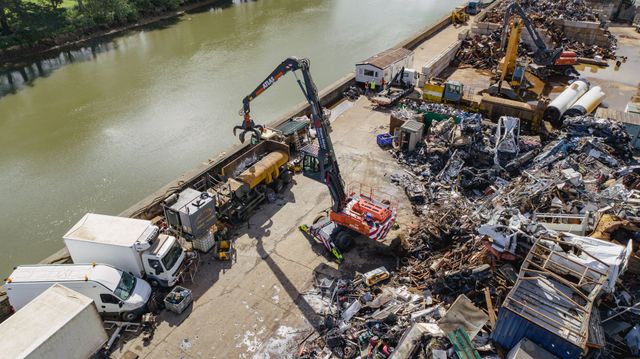
Our world thrives on technology and infrastructure, both of which rely heavily on metals. But as these conveniences reach the end of their lifespan, responsible disposal becomes paramount. Enter electronic recycling and metal recycling – two sides of the same coin, working together to create a more sustainable future.
E-waste: A Growing Challenge
Electronic waste, or e-waste, is the fastest-growing waste stream on the planet. Discarded phones, computers, appliances, and countless other devices pile up in landfills, leaching harmful toxins and posing environmental hazards. These devices also contain valuable resources like gold, copper, and rare earth elements.
Electronic recycling tackles this challenge by recovering these valuable materials. Through a multi-step process, e-waste is dismantled, shredded, and sorted. Metals like steel, aluminum, and copper are separated using magnets and other techniques. Precious metals are then extracted through various chemical or physical processes. These recovered materials are then used to manufacture new electronics, reducing the need for virgin materials and minimizing environmental impact.
The Many Lives of Metal
Metal recycling isn’t new. For centuries, humans have recognized the value of reusing metals. Scrap metal, from old car parts to construction debris, can be processed and transformed into new products. The beauty of metal recycling lies in its efficiency. Compared to virgin metal extraction, which requires extensive mining and energy consumption, recycling uses significantly less energy and resources.
The benefits extend far beyond environmental concerns. Metal recycling creates a robust circular economy, where used materials are continuously reused, reducing our dependence on finite resources. It also stimulates local economies by creating jobs in the recycling and manufacturing sectors.
The Symbiotic Relationship
Electronic recycling and metal recycling work hand-in-hand. E-waste is a treasure trove of metals, making it a prime target for metal recycling facilities. The complex nature of electronics, however, requires specialized dismantling and separation processes before the metals can be effectively recovered. This is where electronic recycling plays a crucial role.
By properly dismantling e-waste and separating the metals, electronic recycling ensures these valuable resources are accessible for the metal recycling industry. In turn, the metal recycling industry provides a reliable pathway for reusing the metals extracted from electronics, minimizing reliance on virgin materials.
The Road Ahead
Both electronic and metal recycling face challenges. Rapid technological advancements create a constant influx of new e-waste with ever-changing components. Additionally, ensuring responsible and environmentally sound recycling practices is crucial.
However, advancements in technology are also paving the way for more efficient and effective recycling methods. Research into automated sorting and separation techniques is showing promise, while stricter regulations on e-waste disposal are encouraging responsible practices.
Taking Action: A Collective Responsibility
As individuals, we can all play a role in promoting electronic and metal recycling. Look for responsible e-waste drop-off locations and avoid throwing electronics in the trash. Choose products made from recycled materials whenever possible. By making informed choices and supporting responsible recycling initiatives, we can contribute to a more sustainable future for our planet.
The next time you upgrade your phone or replace a kitchen appliance, remember: it doesn’t have to become just another piece of waste. Electronic and metal recycling offers a chance to breathe new life into these materials, creating a greener future for generations to come.





